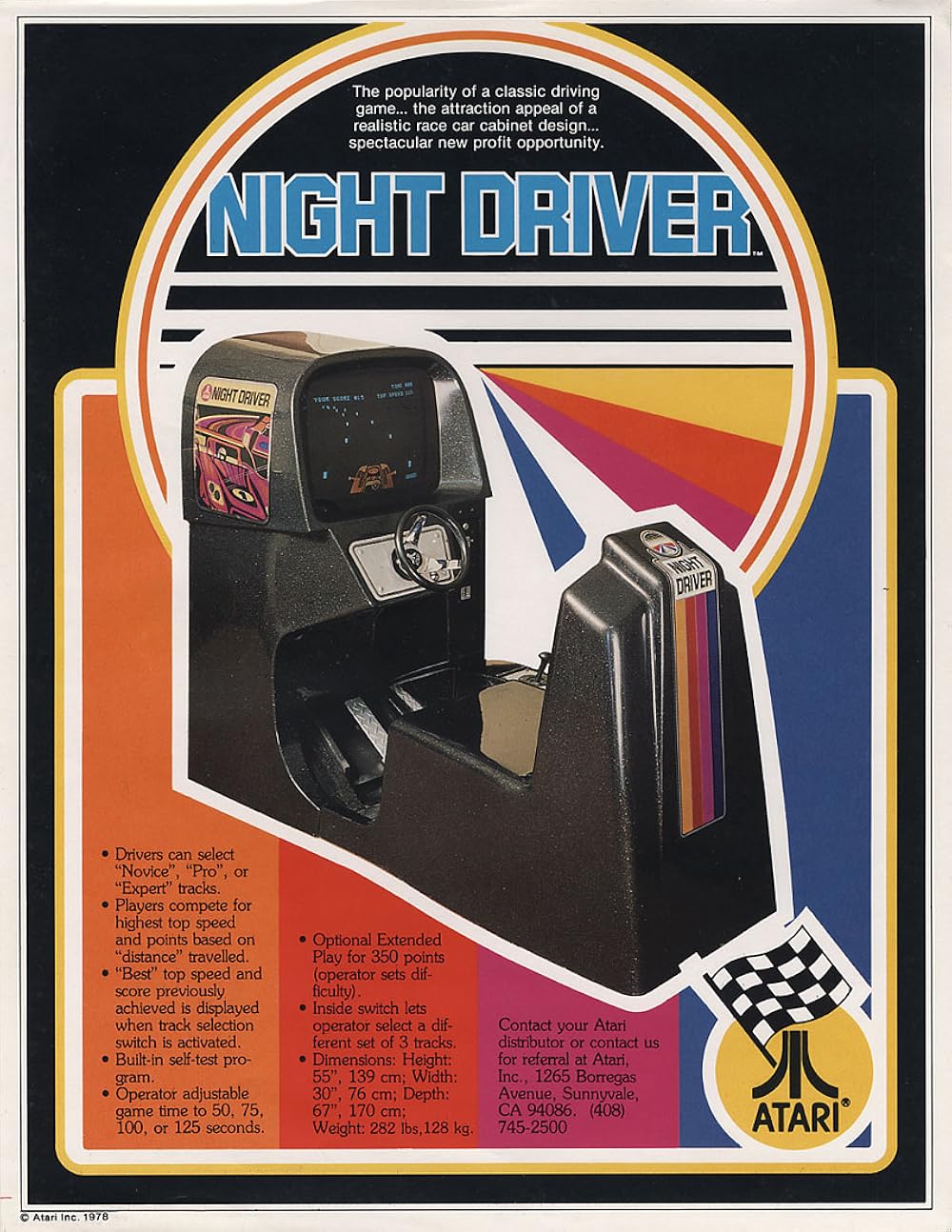The Thrilling Evolution of Sim Racing: A Virtual Motorsport Odyssey
The history of sim racing is a thrilling ride through decades of technological advancements, groundbreaking innovations, and a growing community of passionate racers. From the pixelated tracks of the early arcade days to the high-fidelity esports competitions of today, sim racing has evolved into a serious motorsport discipline, still open and fun to everyone.
If you've ever been fascinated by the realism of modern racing simulators, you might wonder—how did we get here? Buckle up as we take you on a journey through the most interesting milestones that shaped sim racing into what it is today!
The Early Days: Arcade Roots and Home Consoles

What started as simple arcade-style games has transformed into a sophisticated and highly competitive esport, bridging the gap between virtual and real-world motorsport.
But where, where and how did virtual racing exactly start?
The roots of sim racing (link to What is Sim Racing blog post) can be traced back to the late 1970s and early 1980s when games like Night Driver (1976) and Pole Position (1982) gave players their first taste of digital motorsport. These titles, while revolutionary for their time, were still far from true simulation. They prioritized accessibility and fun over realism, with simple physics and limited control mechanics.
The 1990s saw significant advancements with titles like Indianapolis 500: The Simulation (1989) and Grand Prix 2(1996). These games introduced more realistic car physics, tire wear, and vehicle setups, setting the foundation for the modern sim racing genre.
As computing power increased, developers were able to create more detailed and accurate representations of real racing. Which is what exactly happened the following decade.
The Rise of Realism: 2000s and Beyond
The early 2000s marked a turning point in sim racing, as developers pushed the boundaries of realism like never before. Console titles such as Gran Turismo (1997 onwards) and Forza Motorsport (2005 onwards) revolutionized accessibility to semi-realistic racing experiences. With advancements in physics engines, these games introduced more accurate car handling, refined tire grip simulation, and highly detailed track designs based on real-world circuits. While they retained some arcade-like elements, they bridged the gap between casual gaming and true racing simulation, introducing millions of players to the intricacies of competitive racing.
At the same time, PC-based simulators like GTR 2 (2006), rFactor (2005), and Live for Speed (2002) took things to another level, delivering highly detailed physics models that accounted for factors such as tire deformation, aerodynamics, and suspension dynamics. These games allowed for deep customization of car setups, dynamic weather conditions that affected track grip, and even endurance racing features like night transitions and fuel management. This unprecedented level of detail transformed sim racing from a hobby into a training tool used by professional drivers.
As online multiplayer capabilities improved, dedicated racing communities emerged, organizing structured leagues and tournaments. The realism and competitiveness of these PC simulators helped lay the foundation for the professional sim racing scene we see today, where virtual racers compete at the highest level alongside real-world motorsport professionals.
The Modern Era: Esports, VR, and Professional Integration
Fast forward to today, and sim racing has become a professional-level esport with platforms like iRacing, Assetto Corsa Competizione, and rFactor 2 offering ultra-realistic physics, laser-scanned tracks, and dynamic weather conditions. These sims are used by real-world racing teams for driver training, and some sim racers have even transitioned to professional motorsport—most notably, Jann Mardenborough, who went from gaming to real-life GT racing through the Gran TurismoAcademy.
With the advent of VR technology, motion rigs, and direct drive wheels, sim racing is more immersive than ever. Events like the Virtual 24 Hours of Le Mans and the F1 Esports Series attract thousands of viewers and competitors, blurring the lines between digital and real-world racing.
With the advent of VR technology, motion rigs, and direct drive wheels, sim racing is more immersive than ever. Events like the Virtual 24 Hours of Le Mans and the F1 Esports Series attract thousands of viewers and competitors, blurring the lines between digital and real-world racing. But beyond the world of professional esports, sim racing is now more accessible and fun for everyone. Thanks to technological advancements, even those without prior motorsport experience can jump into a virtual cockpit and feel the thrill of racing at high speeds. Whether you're battling for the perfect lap time, experiencing the excitement of wheel-to-wheel competition, or just taking your dream car for a spin, sim racing offers an exhilarating experience that anyone can enjoy.
Sim Racing for Everyone: visit our esports bars in Switzerland and Germany

As we’ve seen in our article, Sim racing, or virtual racing, has come a long way from its early pixelated beginnings to the ultra-realistic experience we have today and has something for everyone.
Therefore, whether you’re a seasoned pro or just getting started, visit us at our Nürburgring Esport lounges in Switzerland and Germany! Located in Zürich Opfikon, Roche, Kriens (Lucerne), Koblenz and Nürburgring, our virtual racing lounges feature full-motion simulators, offering an unparalleled driving experience with access to 70 world-class tracks and over 350 cars, from Formula 1 to Gran Turismo.
So why wait? So strap in, fire up the engine, and get ready to experience the evolution of racing from the comfort of a high-tech simulator!
